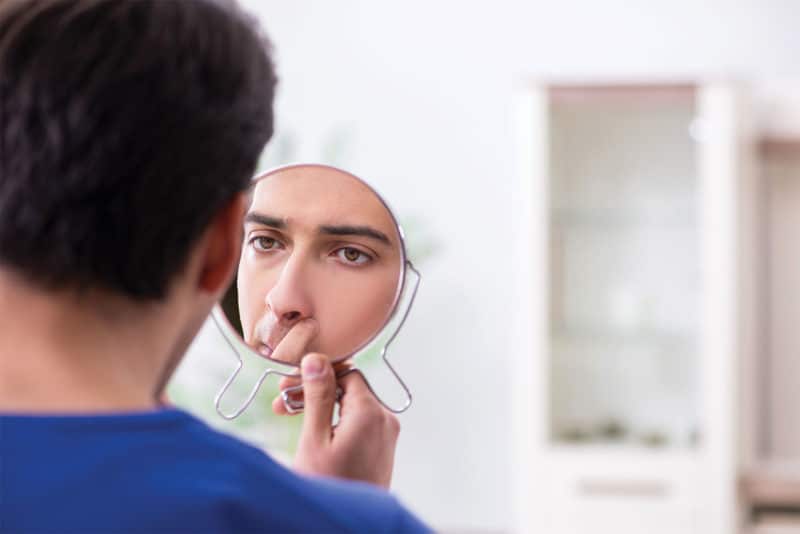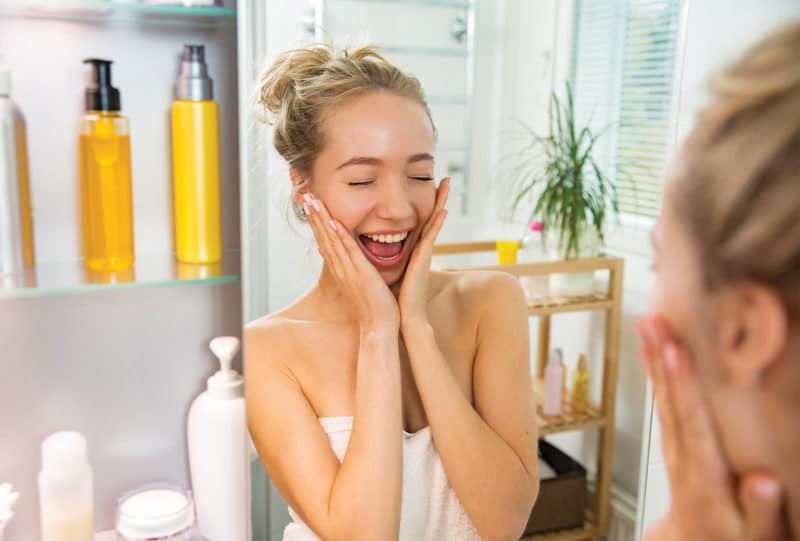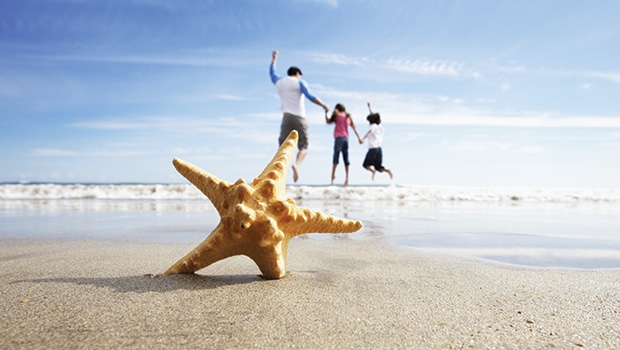With conventional ‘solutions’ often exacerbating teenage skin conditions, Jane Wolfe finds out how young people can benefit from embarking on a natural journey
Adolescents have enough to contend with, given the physical and psychological changes brought on by puberty, as well as the increasing pressure to ‘fit in’ with their peers due to the picture perfect demands of social media. So it is a sad fact that skin problems such as acne inevitably rear their ugly head during this period, adding to these issues and seriously battering teenagers’ self-confidence.
In fact, acne affects around 80% of those aged 13-18 years old, and three out of five teenagers surveyed by the British Skin Foundation said that the biggest impact acne has on their lives is a decrease in self-confidence. This psychological burden of acne on sufferers shouldn’t be underestimated; the charity found a shocking lack of understanding and empathy around the subject, with its survey revealing that 62% of ten to 18-year-olds with acne reported being verbally abused by friends, family or someone they know; 40% being verbally abused by a member of the public; and 46% being bullied regularly – all because of their skin condition.

“Acne, spots and problem skin can have a massive emotional impact on young people,” says SkinGenius director Julia Vearncombe. “It affects every emotion you have, including your happiness, confidence and self-belief, and also has an impact on social skills. Young people affected by acne can miss school, study and days/nights out with family and friends because of the insecurity and embarrassment they feel about themselves and their skin. This goes far beyond skincare, but we must not overlook the impact acne can have on people personally, with friends/peers and in social situations. The effects of acne are more than simply skin deep.”
“Today’s teenagers are also growing up in an Instagram-filter age, where it can be hard to determine skincare reality from virtual reality,” notes Green People founder Charlotte Vøhtz. “Combine this with exam pressure and it’s easy to understand why teens can feel stressed about the state of their skin.”
Acne, spots and problem skin can have a massive emotional impact on young people. It affects every emotion you have, including your happiness, confidence and self-belief, and also has an impact on social skills
And unfortunately this kind of social stress often adds to the severity of the condition. “When we are stressed our hormone levels rise and our arteries become narrower,” Vøhtz explains. “This can restrict the flow of blood and nutrients around the body and this can show up on our skin. Eczema and spots can also flare up when we are stressed, and for this reason it is important that teens feeling under pressure are aware of ways to relieve stress and understand how the products they use can affect the balance of their skin.”
But do teenagers think of health stores as their first port of call when it comes to skin conditions? Joanne Hill, MD of Amaranth health store in Stockport, who sees a lot of teenagers – including an increasing number of boys – coming in with skin problems, mainly acne, eczema and skin sensitivities, says: “People with more severe cases have usually gone the conventional route initially, trying everything from antibiotics to steroids; but those whose skin has just started to flare up often come to us first.”
The good, the bad and the ugly
Unfortunately, conventional treatments can often make things worse, even if at first they appear to help. “What we see, for example with eczema, is that paraffin-based barrier creams may soothe the skin initially, but don’t help long-term,” says Hill. “They create a barrier – like wrapping the skin in Clingfilm – so it can’t breathe or absorb any nutrients. In terms of healing, it’s just wrapping up the problem.
“And similarly with antibiotics for acne. You can understand it – people feel they’ve tried everything and just want a solution, so start a course of antibiotics, which again can clear it up initially, but the question is over the long-term effects.
“We try to deliver nutrients into the skin and ensure its natural oils are retained. If the skin is stripped back too much, its acid mantle can potentially be damaged, and the skin starts to produce more oil to compensate. One of the things we work with is probiotics to try and maintain the good bacteria so they can do their job, but antibiotics kill them off and may cause more problems longer term. We create a programme alongside the antibiotics so that hopefully they can gradually be reduced. What you don’t want is to stop the antibiotics immediately, as the problem will flare up again.”
Hill says the two main ranges she really likes are Salcura Antiac, which includes an oil-based spray that provides a way of hydrating skin without clogging it up with heavy moisturizers; and Green People’s Organic Young (Oy!), which she says cites as a really popular, gentle organic range. “Oy! also sells to people who haven’t necessarily got a skin condition, but as an introduction to natural care for teenage skin,” adds Hill.

Antidotes to acne
“To understand acne, you need to know how your skin works,” explains Alexander Barani, Kinetic Natural Products, UK distributor of Alba Botanica, which has just launched an Acnedote Pimple Patches product and Clearing Gel Peel.
“The pores in your skin contain oil glands which become overactive, enlarge, and produce too much oil or sebum when you hit puberty due to an increase in the sex hormones androgens. When there’s too much sebum, the pores or hair follicles become blocked with skin cells. The increase in oil also results in an overgrowth of Propionibacterium acnes bacteria.”
He explains that Alba Botanica’s Acnedote range was developed as a botanical treatment for acne without the harsh synthetic fragrances and sulphates rife in many products. The ingredients include willow bark extract, a natural source of salicylic acid to help prevent and treat acne (which, unlike synthetic versions often used in conventional treatments, doesn’t dry or irritate the skin); liquorice and lentil extracts to help neutralize acne-causing bacteria and combat shiny skin; and lemon balm and parsley extracts to cleanse and act as natural oil blotters.
If the skin is stripped back too much, its acid mantle can potentially be damaged, and the skin starts to produce more oil to compensate
“Whilst there isn’t much teens can do about their hormones, a good natural skincare regime will help to rebalance congested and oily skin,” says Vøhtz. Green People’s Oy! line is one of the very few natural options specifically targeting teenagers and young adults, and is designed to be distinctly different from high street anti-blemish products that contain alcohol, mineral oils and silicones, which can block pores and worsen acne and oil-prone skin.
The products use skin-balancing ingredients including antibacterial green tea and black willow bark extracts as well as the prebiotic alpha-glucan oligosaccharide to help balance the skin’s natural flora and support good bacteria in fending off acne bacteria and keeping skin clear. In 2017 the range was given a fresh new design to bring it up to date for Gen Z teens who, says the brand, expect both style and substance from their skincare.
SkinGenius also recently refocused its packaging – but this time away from being teen-specific – updating its offer with three natural skincare formulations to appeal to both teenagers and adults. The products are formulated using natural antibacterial ingredients including babassu, macadamia, hazelnut, lemongrass, aloe vera and witch hazel.
Commenting on the rebrand, Vearncombe, says: “It is important for us to stay in touch with our customers and understand their journey and how acne affects them daily. We realized that teenagers don’t want to be identified as teenagers, and adults didn’t consider our products as they thought they were just for teens, so we knew we had to change our message and packaging.”

A combination approach
Hill looks at skin problems from a number of angles when someone comes into the store. “We’ll always ask about diet and any medications they’re taking to try to work out what’s going on. Supplement-wise there are three things we’d look at: specific kinds of probiotics – there’s quite a bit of research with regards to the rhamnosus GG, particularly in terms of acne and eczema; omega-3s for their anti-inflammatory properties and a balancing approach; and a multi. Viridian Clear Skin Complex can take the role of a multi to some extent, and it’s good because it contains probiotics as well as some skin-clearing nutrients; and Wild Nutrition does good age-specific Teenboy and Teengirl multis formulated to support healthy hormone balance.”
The combination approach works best, says Hill, but it does require some commitment. “If we put someone on Viridian’s Clear Skin Complex, with maybe a fish oil and then use the Salcura spray as well, you can quite quickly see a difference, but this involves someone being quite committed. I don’t think they’ll see so much of a difference if they just use the skincare.”
Natural skincare was initially targeted at women in their 30s and 40s, and as their children become teenagers, they will hopefully influence them
So, are there enough resources available to educate young people about the pros and cons of different skincare products and how to look after their skin safely and effectively? “There’s plenty of information available, but there are also lots of myths around spots and acne, so we address some of these in our online Essential Guide to Teenage Spots and Skin Problems,” explains Vøhtz. “We hope that by discussing these topics we can give teens more clarity so they understand how to best care for their skin and learn to build an effective, tailored skincare regime.”
SkinGenius also has an online resource, Skinschool, to support young people with problem skin. “It is designed to help people understand acne better and answer some of the more common questions around it. I understand first-hand the negative impacts that acne can have not just on your skin but with everyday life and confidence too.”
Considering the scant number of natural and organic skincare brands specifically aimed at teenagers, does Hill believe there is a gap in the market? “Maybe there is a gap for more luxury natural brands that look a bit more aspirational, rather than purely functional – teenagers want to have that aspirational brand,” says Hill. “But there’s a question as to whether there’s a big enough market, and if it can be made within the price point, as teenagers are very price conscious.”
“I think growth in this category will come with the general rise in natural products that we’re currently seeing,” says Hill. “Natural skincare was initially targeted at women in their 30s and 40s, and as their children become teenagers, they will hopefully influence them. A problem that we’re always going to have with teenagers is that they want what their friends have got, and if they can buy it for £1.99 from Superdrug, they will.
“However, we are certainly seeing more young people looking at natural make-up, so maybe they will progress onto skincare. It may also increase with the move towards vegan make-up and skincare, which could drive people to move away from what they are currently using.”
Food factors
“There’s a lot of mixed messaging around the impact diet has on teen skin,” says Green People’s Charlotte Vøhtz. “Most teens are probably aware that eating a lot of sugar and pizza could cause a breakout, but it’s important to remember that enjoying a healthy life is about balance, and the health and appearance of our skin is not dependant on diet alone. Teens can have an entirely balanced diet but if their hormones are imbalanced they will still be vulnerable to spots and acne.
“That said, a bad diet can contribute to a spotty complexion because fried foods, animal fat and hydrogenated vegetable oils can increase the production of destructive free radicals. Teens struggling with their skin could consider increasing their intake of omega-3 fatty acids, leafy green vegetables and fresh fruit.”
Julia Vearncombe from SkinGenius recommends keeping a diary for a few weeks to monitor foods, exercise, sleep, moods and skin appearance, so that sufferers can clearly see the difference between a healthy, balanced diet containing natural foods versus foods that contain too much sugar, salt, preservatives and additives. “The challenge is to be strong with your choices and avoid the temptation that’s put in front of you every day.”











